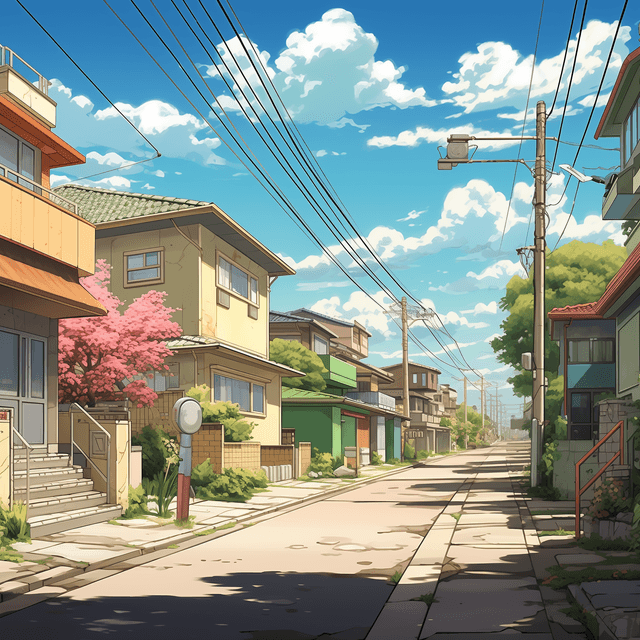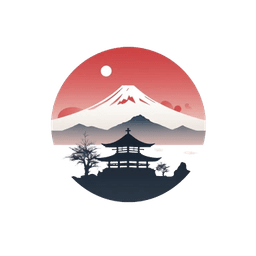- Published on
Japanese Suburbs: A Guide to the Best Neighborhoods Outside Tokyo

- Authors

- Name
- John
Key Takeaways
- Japanese suburbs offer a genuine cultural experience. - They provide a mix of modernity and tradition, showcasing everyday life outside major cities like Tokyo.
- Notable suburbs to visit: Arashiyama (Kyoto) for its bamboo forest, Asakusa (Tokyo) for the Sensoji Temple, and Odaiba District (Tokyo) for shopping and futuristic architecture.
- Understanding "kogai": Japanese suburbs are often a mix of residential and commercial areas, with emphasis on community, sustainability, and family-friendly amenities.
- Cultural significance: Japanese suburbs are rich in history and culture, from the bustling Dotombori District in Osaka to the serene bamboo groves in Arashiyama.
- Nature in the suburbs: They offer an abundance of green spaces, from cherry blossom trees in Dotombori to bamboo forests in Arashiyama.
- Amenities in suburbs: Shopping districts, diverse dining options, industries, cultural institutions, and quality schools make suburbs attractive for living and visiting.
- Transportation: Japanese suburbs are well-connected by efficient public transportation systems, particularly trains, which link them to major cities and tourist spots.
- Tourism attractions: The suburbs host various attractions ranging from festivals to entertainment centers, offering a unique experience for tourists.
- Understanding Japanese Suburbs
- Cultural and Historical Significance
- Japanese Suburbs and Nature
- Suburban Amenities and Facilities
- Transportation in Japanese Suburbs
- Tourism and Events in Japanese Suburbs
- Frequently Asked Questions
If you're looking for a unique cultural experience in Japan, don't overlook the suburbs.
While the cities of Tokyo, Yokohama, Sapporo, Nagoya, Osaka, and Kyoto are certainly worth visiting, the suburbs offer a glimpse into everyday life in Japan.
From the Kanagawa Prefecture to the Nara Prefecture, you'll find a mix of traditional and modern architecture, local cuisine, and cultural activities.

One of the most popular suburbs to visit is Arashiyama, located in Kyoto Prefecture.
This area is known for its bamboo forest, scenic river views, and historic temples. Another must-see suburb is Asakusa, located in Tokyo.
Here you'll find the famous Sensoji Temple, along with traditional shops and street vendors selling local snacks and souvenirs.
If you're interested in modern shopping and entertainment, head to the Odaiba District in Tokyo.
This man-made island is home to shopping malls, theme parks, and futuristic architecture. And for a taste of traditional Japanese culture, check out the Gion district in Kyoto, famous for its geishas and historic teahouses.
Related Posts:
Understanding Japanese Suburbs

If you're planning to visit or move to Japan soon, it's important to understand what Japanese suburbs are like.
In Japan, suburbs are called "kogai," which refers to the areas that are on the outskirts of the city. These areas are often a mix of residential and commercial spaces, with many homes and apartments located within walking distance of shops, restaurants, and other amenities.
One of the most important things to understand about Japanese suburbs is that they are highly livable.
Many neighborhoods are designed with the needs of families in mind, with plenty of green spaces, playgrounds, and other amenities that make them ideal for raising children.
In addition, Japanese homes and apartments are typically well-maintained and modern, with a focus on energy efficiency and sustainability.
Another key feature of Japanese suburbs is the sense of community that exists within them. Neighborhoods often have their own unique character and identity, with local festivals, events, and traditions that bring residents together.
This sense of community is further reinforced by the fact that many Japanese neighborhoods have their own local shops and businesses, which helps to create a strong sense of place and belonging.
Overall, Japanese suburbs are an excellent choice for anyone looking for a safe, livable, and welcoming place to call home.
Whether you're looking for a quiet residential neighborhood or a bustling commercial district, you're sure to find something that meets your needs in one of Japan's many suburbs.
Related Posts:
Cultural and Historical Significance
https://www.youtube.com/watch?v=OjHbS-_nncw&embed=true
Japanese suburbs have a rich cultural and historical significance that is worth exploring.
The suburbs are a reflection of Japan's century-long urbanization process, which has seen the country transform from a predominantly rural society to an urban one.
The suburbs have played a significant role in shaping Japan's cultural identity and providing a window into its historical past.
One of the cultural attractions of the suburbs is the Dotombori District, located in Osaka. This area is famous for its vibrant nightlife, street food, and entertainment.
It is a must-visit destination for anyone who wants to experience the energy and excitement of Japanese culture. The district is home to many restaurants, bars, and theaters, making it a popular destination for locals and tourists alike.
Another cultural attraction is Arashiyama, a district located in Kyoto. This area is famous for its beautiful bamboo groves, temples, and shrines. It is a peaceful and serene location that offers a glimpse into Japan's historical past.
The district is home to many traditional Japanese houses, making it a great place to experience the country's traditional architecture.
Asakusa is another district in Tokyo that is steeped in history and culture. It is home to the famous Sensoji Temple, one of the oldest temples in Tokyo.
The area is also famous for its traditional shopping street, Nakamise, which is lined with shops selling traditional Japanese goods.
Gion is a district in Kyoto that is famous for its geisha culture. It is a great place to experience traditional Japanese entertainment, such as tea ceremonies and traditional dance performances.
The district is also home to many traditional Japanese restaurants, making it a great place to sample some of Japan's finest cuisine.
Ginza is a district in Tokyo that is famous for its high-end shopping. It is home to many luxury brands, making it a great place to indulge in some retail therapy.
The district is also home to many traditional Japanese restaurants, making it a great place to experience Japan's culinary delights.
Akihabara is a district in Tokyo that is famous for its electronics and anime culture. It is a great place to experience Japan's modern culture and technology.
The district is home to many electronics stores and anime shops, making it a must-visit destination for anyone interested in Japanese pop culture.
Finally, the Odaiba District is a modern development in Tokyo that offers a glimpse into Japan's future. It is home to many futuristic buildings and attractions, such as the Gundam statue and the Miraikan science museum.
The district is also home to many shopping malls and restaurants, making it a great place to spend a day exploring.
In conclusion, Japanese suburbs have a rich cultural and historical significance that is worth exploring. From traditional temples and shrines to modern shopping malls and entertainment districts, there is something for everyone to enjoy.
Whether you are interested in Japan's historical past or its modern culture, the suburbs offer a unique window into the country's identity.
Japanese Suburbs and Nature

If you're looking for a place to live in Japan, you'll be happy to know that Japanese suburbs are known for their abundance of nature.
From parks to green spaces to ponds, you'll find plenty of opportunities to enjoy the great outdoors.
One of the best places to experience nature in a Japanese suburb is the Dotombori District. This area is known for its beautiful cherry blossom trees, which bloom in the spring. You can take a stroll along the river and enjoy the view, or have a picnic in one of the nearby parks.
Another great place to experience nature is Arashiyama. This area is located on the outskirts of Kyoto and is known for its beautiful bamboo forest.
You can take a walk through the forest and enjoy the peaceful surroundings, or visit one of the nearby temples.
If you're in Tokyo, you can experience nature in the Asakusa area.
This area is home to the famous Sensoji Temple, which is surrounded by a beautiful garden. You can take a walk through the garden and enjoy the greenery, or visit the nearby Sumida Park.
Gion is another great area to experience nature in Kyoto. This area is known for its traditional architecture and beautiful cherry blossom trees.
You can take a walk through the streets and enjoy the view, or visit one of the nearby parks.
If you're looking for a more modern experience, you can visit Ginza in Tokyo.
This area is known for its high-end shopping and beautiful architecture. You can take a walk through the streets and enjoy the view, or visit one of the nearby parks.
Akihabara is another modern area in Tokyo that you can visit. This area is known for its electronics and anime shops.
While it may not be known for its nature, you can still find some green spaces to enjoy.
Finally, if you're looking for a more futuristic experience, you can visit the Odaiba District in Tokyo. This area is known for its high-tech architecture and beautiful views of the bay. You can take a walk along the waterfront and enjoy the view, or visit one of the nearby parks.
Overall, Japanese suburbs offer a great balance of nature and modernity. Whether you're looking for a peaceful walk through a bamboo forest or a high-tech shopping experience, you'll find it all in Japan.
Suburban Amenities and Facilities

When it comes to suburban amenities and facilities in Japan, you can expect to find a wide range of options that cater to your needs. From shopping to dining, industry to retail, museums to schools, and everything in between, the suburbs of Japan have got you covered.
One of the best things about suburban living in Japan is the abundance of shopping options available.
Whether you're looking for high-end luxury goods or affordable everyday items, you'll find it in the suburbs. Some of the best shopping districts in Japan include the Dotombori District in Osaka, the Ginza district in Tokyo, and the Odaiba District in Tokyo.
When it comes to dining, the suburbs of Japan offer a diverse range of options to suit every taste and budget.
From traditional izakaya to modern cafes, you'll find it all in the suburbs. Some of the best dining destinations in Japan include the Asakusa and Gion districts in Tokyo, and the Arashiyama district in Kyoto.
In addition to shopping and dining, the suburbs of Japan are home to a wide range of industries and businesses.
Whether you're looking for a job or starting your own business, the suburbs offer plenty of opportunities. Some of the most popular industries in Japan include technology, automotive, and manufacturing.
If you're interested in culture and history, the suburbs of Japan are home to a number of museums and other cultural institutions.
From traditional art museums to modern science centers, you'll find it all in the suburbs. Some of the most popular museums in Japan include the Tokyo National Museum and the National Museum of Nature and Science.
For families with children, the suburbs of Japan are home to a number of excellent schools. Whether you're looking for public or private education, you'll find it in the suburbs.
Some of the most popular schools in Japan include the International School of the Sacred Heart and the American School in Japan.
Overall, the suburbs of Japan offer a friendly and welcoming environment with plenty of amenities and facilities to suit every need.
Whether you're looking for shopping, dining, culture, or education, you'll find it in the suburbs of Japan.
Transportation in Japanese Suburbs
Getting around in the suburbs of Japan can be a breeze with its efficient public transportation system.
Train stations are the most common mode of transportation in the suburbs of Japan.
Train lines operated by Japan Railways (JR) and private railway companies connect the suburbs to the major cities of Tokyo, Shibuya, Meguro, Kichijoji, Shinjuku, Omiya, Daikanyama, Ebisu, Omotesando, Akihabara, Harajuku, Marunouchi, Yoyogi, Ueno, Koenji, and Nakameguro.
The Dotombori District, Arashiyama, Asakusa, Gion, Ginza, Akihabara, and Odaiba District are some of the popular tourist spots in Japan.
These areas are easily accessible by train from the suburbs. Train stations in the suburbs usually have multiple lines running through them, providing easy transfers to different parts of the city.
In addition to trains, buses are also available in the suburbs. Buses are a great option for traveling to areas where there are no train stations or for short distances.
Bus routes and schedules are easily accessible through smartphone apps and websites.
If you prefer to travel by car, rental cars are available in the suburbs. However, keep in mind that driving in Japan can be challenging due to the narrow roads and heavy traffic.
Overall, public transportation is the most convenient and efficient way to get around the suburbs of Japan. With its extensive train and bus network, you can easily explore the city and its surrounding areas.
Tourism and Events in Japanese Suburbs
If you're a tourist looking for a unique Japanese experience, the suburbs are a great place to start. From entertainment centers to festivals, there's something for everyone.
Here are some of the top attractions in the suburbs:
Festivals
The suburbs are home to some of the most exciting festivals in Japan. One of the most popular is the Sapporo Snow Festival, which takes place in February.
The festival features stunning ice sculptures and attracts tourists from all over the world. Another popular festival is the Chichibu Night Festival, which takes place in December and features fireworks and floats.
Entertainment
The suburbs are home to many entertainment centers, including theaters and galleries. One of the most popular theaters is the Tokyo Theater for Children, which features performances for kids of all ages.
If you're interested in art, be sure to check out the Ceramic Art Museum in Ichihara.
Tourist Spots
The suburbs are also home to many popular tourist spots. One of the most famous is the Dotombori District in Osaka, known for its vibrant nightlife and delicious street food.
Another popular spot is Arashiyama in Kyoto, which is famous for its beautiful bamboo groves and scenic views.
Related Posts
Frequently Asked Questions
What are some of the best suburbs to live in Japan?
If you're looking for the best suburbs to live in Japan, there are several options to consider. According to Expat Arrivals, Minato, Shibuya, and Meguro are particularly popular with expats.
These areas offer plenty of international interaction, as well as supermarkets and shopping options that shelve familiar items from home.
What are the characteristics of Japanese neighborhoods?
Japanese neighborhoods are known for their cleanliness, safety, and strong sense of community. You'll often find small shops and restaurants run by locals, as well as parks and other public spaces that are well-maintained.
Many neighborhoods also have their own festivals and events throughout the year, which can be a great way to get to know your neighbors and immerse yourself in local culture.
Are there suburban neighborhoods in Japan?
Yes, there are many suburban neighborhoods in Japan. These areas are typically located outside of major cities and offer a quieter, more laid-back lifestyle compared to urban areas.
Some popular suburban neighborhoods in Tokyo include Meguro, Asakusa, and Arashiyama in Kyoto.
Where can I find a map of the suburbs in Tokyo?
If you're looking for a map of the suburbs in Tokyo, there are several resources available online. Expat Arrivals has a comprehensive guide to the best areas and suburbs in Tokyo, while Tokyo Cheapo offers a detailed breakdown of different neighborhoods in the city.
What is life like in rural Japan?
Life in rural Japan can be quite different from life in urban areas. While rural areas offer a slower pace of life and a closer connection to nature, they can also be more isolated and have fewer job opportunities.
However, many people find that the benefits of living in a rural area, such as fresh air and a strong sense of community, outweigh the drawbacks.
What is the meaning of the term 'kogai' in Japanese suburban areas?
In Japanese suburban areas, the term 'kogai' refers to the small, self-contained communities that are often found within larger neighborhoods.
These communities typically have their own parks, shops, and other amenities, and are designed to give residents a sense of belonging and community within a larger urban area.
